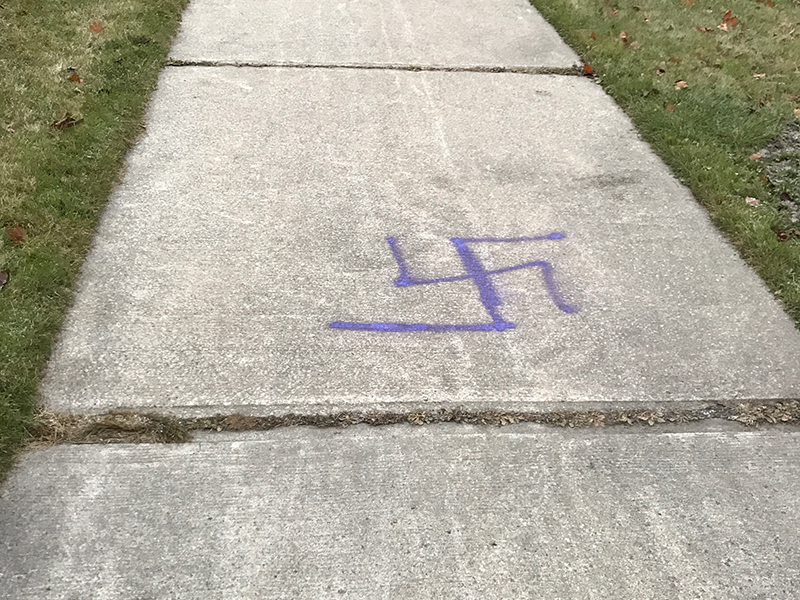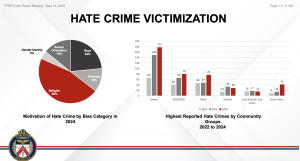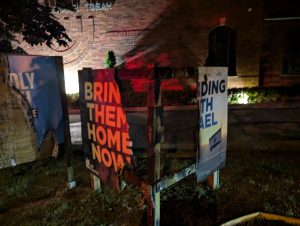It seems as though the more things change, the more they stay the same: continuing a trend that dates back to 2008, Jews were again the single most targeted group for hate crimes in Toronto.
According to the Toronto Police Service’s 2017 Annual Hate Crime Statistical Report, the number of hate crimes in the city jumped 28 per cent, from 145 in 2016, to 186 last year. Jews were the victims in 53 of those occurrences, or nearly 29 per cent.
“In 2017, the Jewish community, followed by the black community, the Muslim community and the LGBTQ community were the groups most frequently victimized,” the report states.
Breaking down their findings by victim groups, police reported that Jews were the most targeted group, followed by blacks and Muslims, who each experienced 33 occurrences. Next were incidents targeting individuals with multiple identities, called multi-bias occurrences, with 27, and LGBTQ with 22.
READ: JEWS MOST TARGETED RELIGIOUS GROUP FOR HATE CRIMES
When the religious component of multi-bias crimes is included – such as victims being identified by perpetrators as both black and Jewish, or Ukrainian and Jewish – the number of Jewish victims increases to 66, or 35 per cent of all incidents.
Jews have been the single most targeted victim group in Toronto for the past decade, according to police data. The number of incidents targeting Jews increased by 23 per cent in 2017 over 2016, when Jews were the victims of 43 occurrences, or about 30 per cent.
When examining the data by type of offence, police reported that the vast majority of incidents involving Jews were mischief offences, such as graffiti on property, with 46 occurrences. There were five incidents of uttering threats to cause bodily harm or threatening death and two involving the wilful promotion of hatred.
Jewish groups lamented the regrettable status of being the single most targeted victim group. “It is appalling that, in a city as welcoming and diverse as Toronto, an anti-Semitic crime took place on average once a week in 2017. Behind every victim of anti-Semitism is a person and a family who feel the lingering impact of hate,” said Noah Shack, the Centre for Israel and Jewish Affairs’ vice-president for the Greater Toronto Area.

Avi Benlolo, president and CEO of the Friends of the Simon Wiesenthal Center, said that, “It is disheartening and profoundly worrisome to see such a sharp increase in the number of annual hate crimes in Toronto.
“It was an overwhelming year for the Jewish community, as we witnessed a clear increase in the number of anti-Semitic hate crimes taking place.”
While the number of incidents involving Jews rose yet again in 2017, the severity of the occurrences contrast sharply with the sorts of events taking place in Europe.
In the same week as the report was released, two men wearing kippot were attacked in the streets of Berlin by a man wielding a belt, who shouted “Yahudi” (Arabic for Jew), as he whipped one of them.

A few weeks before, in Paris, an 85-year-old Holocaust survivor was murdered in her apartment. And in England, Labour Leader Jeremy Corbyn came under fire from Jewish groups for tolerating overt anti-Semitism in his party.
Shack acknowledged that while Canadian statistics may fluctuate, “Toronto is, by international comparisons, a very safe place to be Jewish. The rate of anti-Semitic assaults in France is, depending on the year, about 13 times that of Canada. There is no question that the situation in Europe is far worse. We must nevertheless remain vigilant and continue to work strategically with our partners in law enforcement and government to combat hate.”
As for reports that most of the crimes targeting Jews were mischief offences, Shack said: “Nonetheless, anti-Semitic vandalism and mischief – particularly directed against communal institutions – has a lingering psychological impact on targeted communities. But we have the resilience, resources and expertise to deal with this challenge.”






